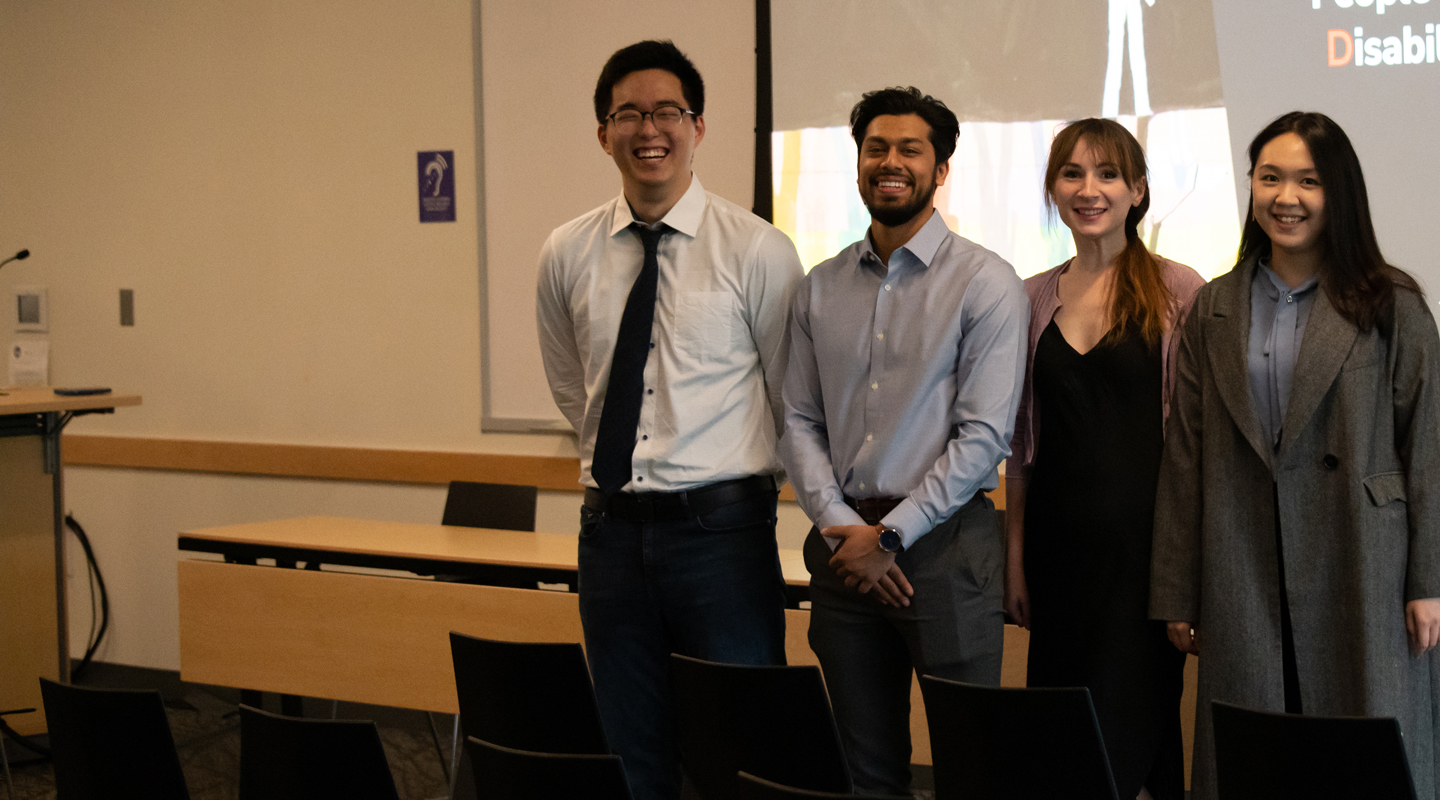Take a moment to consider Jane, a 32-year-old who was diagnosed with multiple sclerosis at age 23 and who recently gave birth to her first child. Jane lives on the first floor of a Long Island apartment building with her husband, Dave.
After the birth, Jane received the physical and mental assistance at the hospital for someone with a long-term condition who has undergone such a major life change. After returning home, she’s struggled with multiple issues, including postpartum depression and difficulties breastfeeding.
Moreover, Jane grew up with parents without disabilities and her image of parenting is based upon their care. She’s felt guilty and stressed over her own limitations with her newborn.
“Jane” is one of seven personas constructed by a team of students at the University of Washington’s Information School. The students are looking at how access to broadband internet can improve the lives of people with disabilities.
The example of Jane isn’t a whole-cloth creation. The students pulled her traits – and the traits of the other personas — from people who took part in earlier research.
The students are (pictured, from left) Stephen S. Lee, Ali S. Salahuddin, Iva Matkovic and Yimeng Wang. They are in the second year of the iSchool’s Early-Career Master of Science in Information Management (MSIM) program.
This is their Capstone project, the final major milestone before graduation. They’re working with Microsoft’s Airband Initiative, which aims to bring high-speed internet connectivity to people around the world.
The students wanted to illustrate the difficulties people face on individual levels. They created the personas to drill down into minute details of the lives of people with disabilities.
“It feels like in the research (that we reviewed) that people with disabilities are forgotten in this digital transformation that the world is going into,” said Lee, who is specializing in information architecture and program/product management and consulting.
For Jane, the students argued that access to broadband internet would allow her to join online groups, where she could gain social and emotional support. She could also learn online about adaptive baby care equipment, discover techniques for caring for her newborn and hear from others who have faced a similar situation.
When they took on this project last fall, the students delved into existing research on people with disabilities and their access to broadband, both the availability and also the actual usage of high-speed internet.
The students found that local, state and federal governments and corporations and charities have spent billions of dollars over the years trying to address equity with technology for people with disabilities.
It hasn’t been as successful as it could have been because too much of the research neglects the actual people whose lives could be improved, Wang said. That’s why as part of their project, they wanted to put these stories at the forefront.
“We believe that if you want to actually design something to benefit someone who is in a minority group, you should actually include them in your research and in your design process,” said Wang, who is specializing in user experience.
Salahuddin said researchers in the past have done an admirable job looking at access to broadband internet for some groups, such as people of color and older adults. While people with disabilities can be a part of both groups, the students didn’t feel enough has been done looking at their individual circumstances.
Salahuddin, who is specializing in both data science and program/product management and consulting, looked up statistics on broadband access as well as usage. He found that states with low broadband usage were also states that had high numbers of people with disabilities.
Is there a correlation? More research needs to be done, Salahuddin said. And it needs to put the people with disabilities front and center.
“As somebody without disabilities, my point of view is very different from somebody who has vision loss or hearing loss,” Salahuddin said. “Some of the things that they need on a day-to-day basis may be something that I may not think about.”
And that led to the recommendation for the project. The students believe that organizations need to better engage people with disabilities at an individual level in participatory design sessions.
“We recommend including people with disabilities in designing and taking a lead in design,” said Matkovic, who is on the program’s user experience specialization. “It would be a way for them to tell their own stories and a way to empower them.”
When the group was looking at Capstone projects last fall, Matkovic felt passionate about this one. She’s interested in the underserved. She’s also an immigrant from Serbia and herself has experienced struggles living in another culture. She sees a shared sense of frustration with people with disabilities.
“They’re facing challenges that I don’t experience, that are unique to them,” Matkovic said. “But I’m interested in how we can make design solutions for these everyday problems.”
